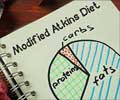A new study has revealed that excess weight on a woman's hips and a man's waist elevates the risk of potentially fatal blood clots.
A new study has revealed that excess weight on a woman's hips and a man's waist elevates the risk of potentially fatal blood clots.
Researchers reported in Circulation: Journal of the American Heart Association that the location of extra pounds appears to affect the risk of blood clots in middle-aged people, but affects men and women differently.In a 10-year prospective study, Danish scientists assessed the relationship between body mass, weight distribution and incidence of blood clots in veins, a condition known as venous thromboembolism (VTE), among 27,178 men and 29,876 women ages 50 to 64 years old at study entry.
VTE includes deep vein thrombosis and pulmonary embolism. During the 10 year study, 641 VTE events occurred according to medical records.
Thromboembolism, an important cause of disease and death in adults, results when a clot breaks free from one blood vessel and blocks another - typically from the legs to the lungs.
The Danish team found statistically significant positive associations between VTE and all measurements of body size, including body weight, body mass index (BMI), total body fat mass, waist circumference and hip circumference, among both men and women. The associations were the same regardless of the type of VTE.
The researchers observed a direct relationship between VTE and weight distribution in both genders. When adjusted for waist and hip circumference, hip circumference was positively associated with VTE in women but not men, while waist circumference was positively associated with VTE in men but not women.
"The BMI is a marker of excess weight and correlates well with body fat content in adults; however, it fails to consider the distribution of body fat," said Marianne Tang Severinsen, M.D., lead author of the study and researcher in the Department of Clinical Epidemiology at Aarhus University Hospital in Aalborg, Denmark.
Source-ANI
RAS
 MEDINDIA
MEDINDIA




 Email
Email










